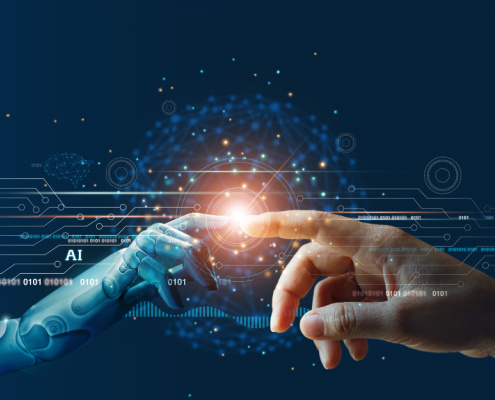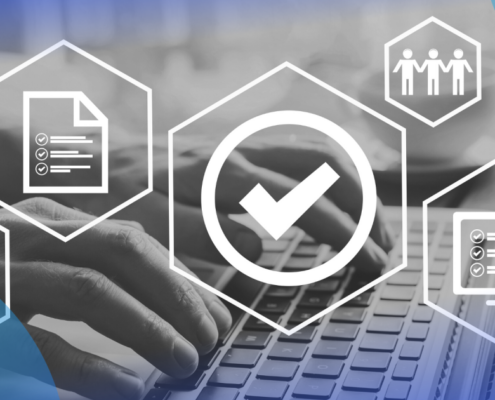
Everyone seems to have a different definition of the digital workplace. Some take a simple approach and define it as the virtual version of the physical workspace, though others go a little further.
Deloitte defines it as existing and future tech that people use to complete their work, including core business apps, email, virtual meeting tools, instant messaging, HR platforms and so on.
However, this definition is far too narrow and specific. It’s not enough to merely focus on the technology, because a digital workplace can differ from one organization to the other. It also makes it sound as if only technology is important to the digital workplace, ignoring the importance of people and processes.
Gartner, on the other hand, defines it as “an ongoing, deliberate approach to delivering a more consumer-like computing environment that is better able to facilitate innovative and flexible working practices.”
They expand on this by stating that a digital workplace allows for new and more efficient ways of working, which leads to an increase in “employee engagement and agility.”
We feel this definition is far closer to the reality of the digital workplace. However, we find that Jussi Roine, Microsoft Regional Director, comes closest. He states that the digital workplace is all about a change in culture that allows people to work together, while becoming more efficient and productive. In other words, it’s about a lot more than technology, tools, or a “single technical setting you turn on in your organization.”
So, in essence, the digital workplace is all about putting people first. It’s about using any and all tools, including technology, to strategically create and implement an engaging work environment that allows people to maximize their creativity and deliver outstanding performance.
The Importance of the Digital Workplace to Enterprise Growth
While tools and processes certainly matter and are vital to creating an effective digital workplace, they are not the key. It’s all about people.
Gartner says something to this effect when they introduce the idea of the consumer. Consumer-oriented isn’t just a buzzword anymore. To succeed in today’s economic environment, organizations have to adopt a consumer-centric business model.
What does that mean? It means building the business around the consumer. It means putting people first.
However, when it comes to employees, there seems to be some form of disconnect. It’s almost as if organizations don’t realize that employees are people too. Their focus is completely external, while internally, they wear blinders.
Once you shift your mindset and internalize the concept that employees are people, you’ll realize that what works for the consumer will also work for the employee.
After all, your employees are also consumers, and when you adopt similar internal goals such as increasing engagement and loyalty, you will find that you gain the same benefits as you do from consumers.
However, in this case, the benefits happy and loyal employees generate spiral outwards to the consumer, further improving your position with your target market.
Improving employee engagement and, implicitly, productivity and creativity is what the digital workplace is all about. Technology and processes are simply the means to achieve this goal.
An effective digital workplace will:
• Improve communication
• Enable effective collaboration
• Allow for the finding and sharing of knowledge and information
• Increase work agility
All this will be possible even when people aren’t face-to-face.
So, how exactly will a digital workplace help with growth? It all stems from increased employee engagement.
An effective digital workplace will:
• Improve communication
• Enable effective collaboration
• Allow for the finding and sharing of knowledge and information
• Increase work agility
All this will be possible even when people aren’t face-to-face.
So, how exactly will a digital workplace help with growth? It all stems from increased employee engagement.
According to Gallup, companies that have a highly engaged workforce achieve a profit greater by 21% than companies that have an unengaged workforce.
Furthermore, companies with high engagement rates are able to more easily attract talent, while also having lower attrition rates.
A long-term study also found that organizations with a great culture that put the employee first achieved 682% revenue growth over 11 years. This is compared to companies without a good culture that only achieved a growth of 166% over the same timeframe.
An effective digital workplace starts with shifting one’s mindset towards an employee-centric model, which will naturally lead to a far better corporate culture.
The digital workplace also allows for increased flexibility, which is an important driver of employee engagement. For example, according to Staples, 90% of employees say that being given the choice for a more flexible work environment and schedule will boost morale, while 67% stated they would consider changing jobs if their work situation became more rigid.
A digital workplace can be a key driver of enterprise growth, but only if it’s done right. Focusing on the technology is the wrong approach. Instead, organizations need to start with a mindset shift, namely that of developing an employee-centric culture. Once the employee comes first, it will become far easier to develop and implement a digital workplace that achieves positive business outcomes.
Looking to Enhance the Employee Experience?
Click To Watch Our Webinar!












